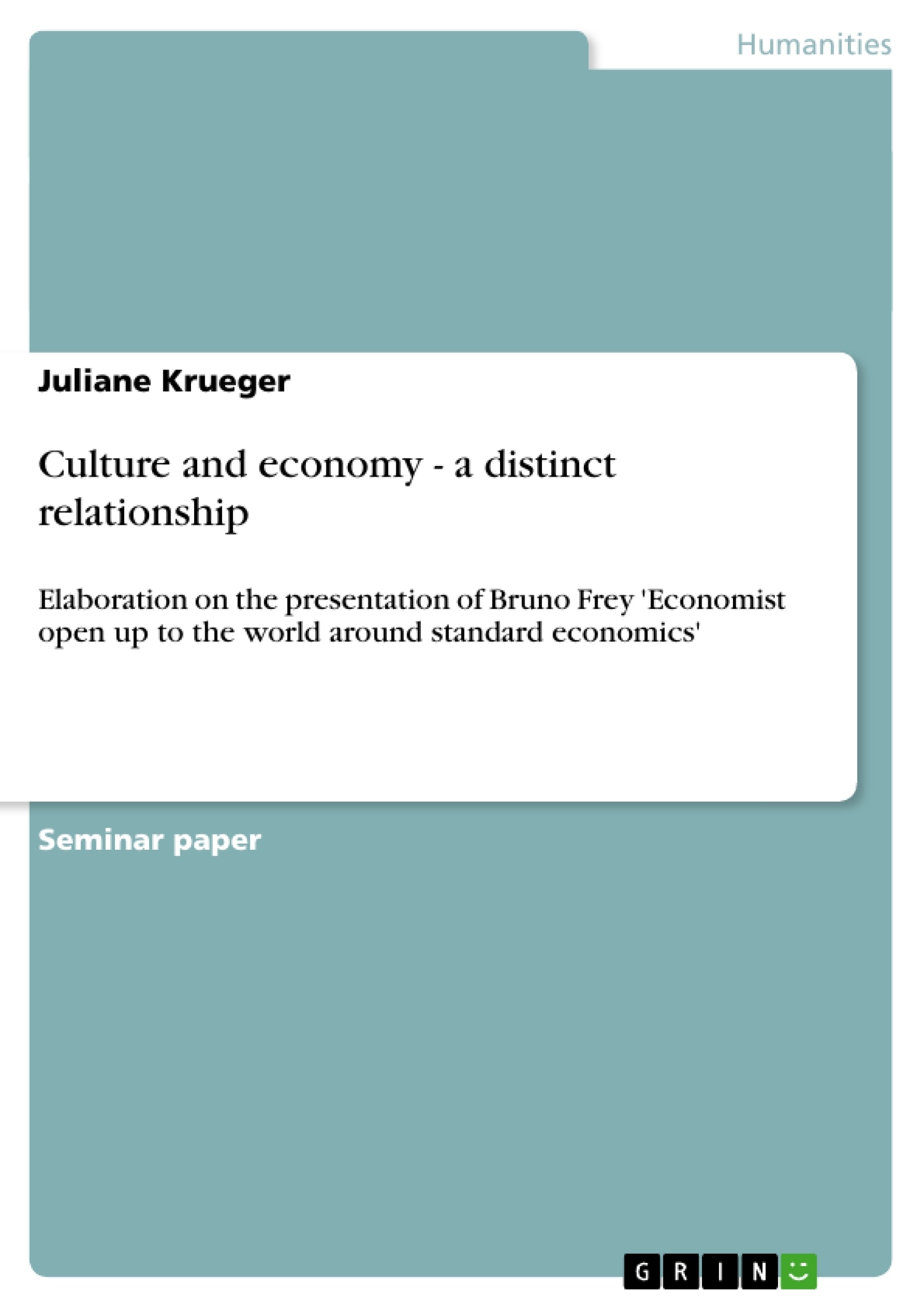“Economists – on the arts? Isn’t this a blasphemy? On the contrary: we believe that economists are able to contribute to a better understanding of many different aspects of both the visual and the performing arts.”
(Bruno Frey & Werner Pommerehne 1990:vii)
Economy and art - for many decades these two fields were considered to be incompatible. But with the genesis of cultural economics the application of economic theories on art became generalizable.
Among others Bruno Frey, a Swiss economist, devoted a great deal of his research work to explorer in what way an economic viewpoint and/or the market can be beneficial to art and what effects different instruments have on the arts and on society in general.
The first part of this book is giving a short overview of the development and characteristics of Cultural Economy and introduces Bruno Frey’s work. Afterwards Frey’s argumentation considering the effects of the market on art is presented and contrasted with other authors in order to proceed to a general critique of the market. Concluding, the book opens up a global perspective, underlining the consequences of an economisation of the arts.
Inhaltsverzeichnis (Table of Contents)
- Introduction
- Development and Presentation of the field of Cultural Economics
- What constitutes an economic perspective?
- Comparison of the economic and the sociological point of view.
- Bruno Frey
- Life and significance as a scientist
- Summary of selected works
- Main concepts and their relevance for the arts
- "No Policy is the best Policy"? Arguing for and against markets
- Conclusion
- Literature
- Appendix
Zielsetzung und Themenschwerpunkte (Objectives and Key Themes)
This paper aims to provide a comprehensive understanding of the relationship between culture and economy, with a particular focus on the work of Swiss economist Bruno Frey. It seeks to analyze how economic perspectives and theories can be applied to the arts, examining both the potential benefits and the critical perspectives on this approach.
- The historical development and characteristics of Cultural Economics
- The application of economic concepts and models to the arts
- The role of the market in shaping and influencing cultural production
- The potential benefits and drawbacks of an economic approach to culture
- The social and cultural consequences of economization in the arts
Zusammenfassung der Kapitel (Chapter Summaries)
- The introduction lays the groundwork for the paper, outlining the convergence of economy and culture, and highlighting the controversial nature of applying economic principles to the arts. It introduces Bruno Frey's work as a key point of reference.
- Chapter 2 delves into the development of Cultural Economics as a field of study. It explores the economic perspective on art, discussing the rational choice framework and the concept of scarcity, while also recognizing the limitations of strictly economic models.
- Chapter 3 focuses on Bruno Frey, his contributions to Cultural Economics, and his central arguments regarding the role of the market in the arts. It examines Frey's work on intrinsic motivation and crowding-effects, highlighting the importance of non-monetary factors.
Schlüsselwörter (Keywords)
The main keywords and focus topics of this work include Cultural Economics, Bruno Frey, market mechanisms, arts, intrinsic motivation, crowding-effects, cultural production, economization of culture, and the social value of art.
- Quote paper
- Juliane Krueger (Author), 2006, Culture and economy - a distinct relationship, Munich, GRIN Verlag, https://www.grin.com/document/57541




